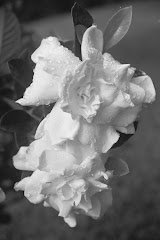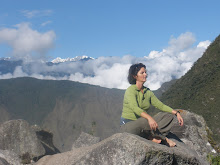








I am in Peru with Global Volunteers, an organization based in the US that covers programs in about 25 countries. Our volunteer group is #66 for Peru and we are a small group. Kelly and I are from Colorado and Pauline is from Chicago. Kelly was with us for a week and Pauline and I are two weeks. Edith is our team leader. She is the most amazing person. She's just 27 years old but has the wisdom of a much older person. She has the most wonderful laugh. I want to capture it on my video so that I can bring it back with me to cheer me up when I am down. She is always so positive and upbeat. She does so much for the children with so little and she cares so much for them. She is a real gem. I can't begin to describe her. You can see from the photos that she is small in statue (shorter than I am) but she has the biggest heart. The PPA is a very large campus that was built at on a cliff overlooking the Pacific Ocean. The view is primarily blocked by trees and fences as it would not be safe for the children. I have included a few photos of the buildings, the dormitories, the kitchen, etc. just to give you some idea. The property is large and there are numerous buildings so maintenance and upkeep are costly. Sometimes the Global Volunteer groups do maintenance work such as painting and plumbing. GV helps where and when they are needed. Sometimes they have to help buy food. The price of food is going up and the children didn't have bread for several days until GV pitched in to help pay for it.
I am including photos of two of the little girls we work with each day here. One of them is going to be adopted by one of the previous volunteers. She has been working on it for about six months and Edith says it will probably take a year. There is an adorable little boy named Joseph who is an orphan. He is so bright and sweet. His eyes could melt the ice queen in to a puddle of water. He needs to be adopted. I wish I knew someone who could adopt him. Edith says she would adopt him if they asked her to but then she would not be able to work. She clearly loves him and wants him to have a good home. She helped care for him a lot when he was very small.
There are many programs that can't happen at PPA unless there are volunteers. This group being so small we could not cover everything. The children ask Edith to bring more "visitas". She says she will bring more and the children as her, "will they love us?" There are programs helping with the 6-12 month old children in the mornings and the afternoons, art therapy in the afternoons with the 3-5 year olds, taking children with physical therapy needs to Tonito Silva, Hospital care, Sibling group play, dulces suenos (sweet dreams) in the evenings and helping out with English in the afternoons for the older kids. There are also maintenance and building projects, painting the nurseries (Steve Martin and his family came this summer and he painted a giant Horton on the playroom wall). Think about volunteering for the children of Peru or if you don't think that is for you, go to global volunteers website and donate money - you can designate for Peru or you can let them use it for all their programs. But the children need you. Even a small amount can help - $10 would probably feed a couple of children for week or buy some diapers or other supplies or help pay for bread. Please think about it. Please go to www.globalvolunteers.org/sponsorship

























